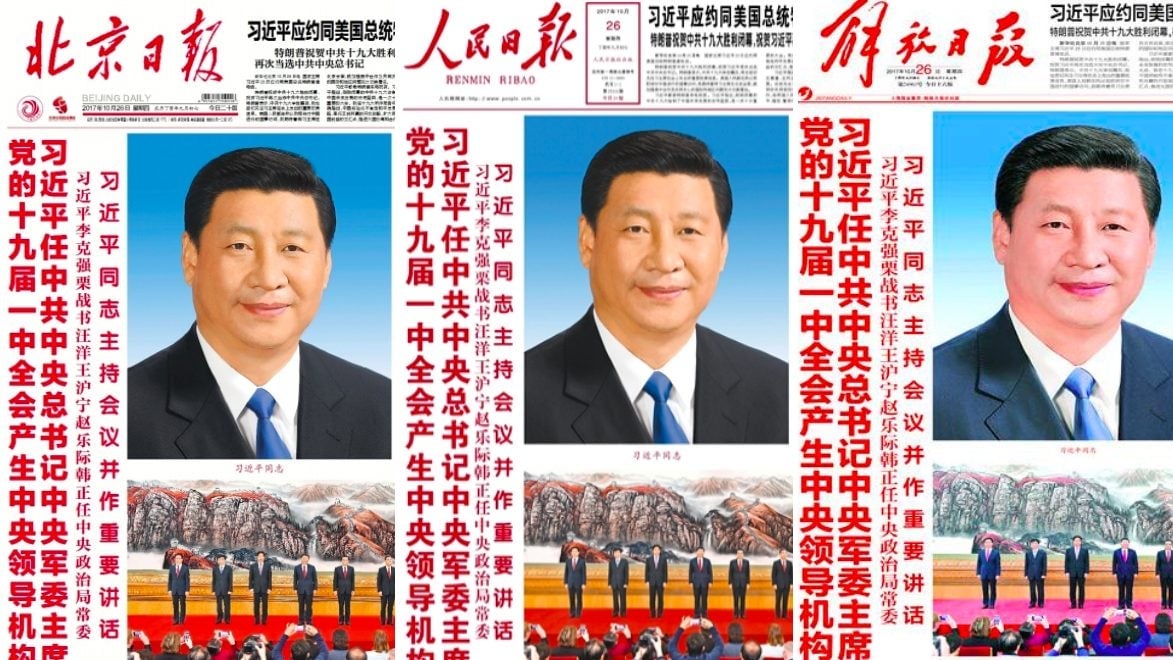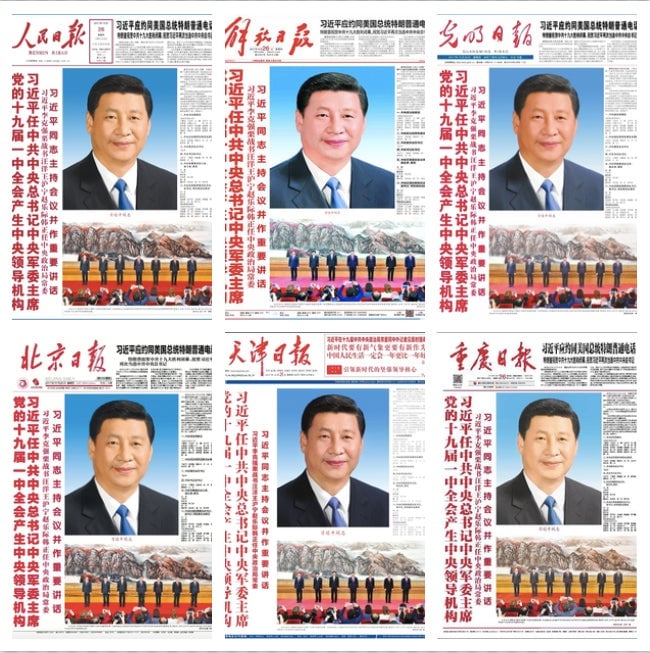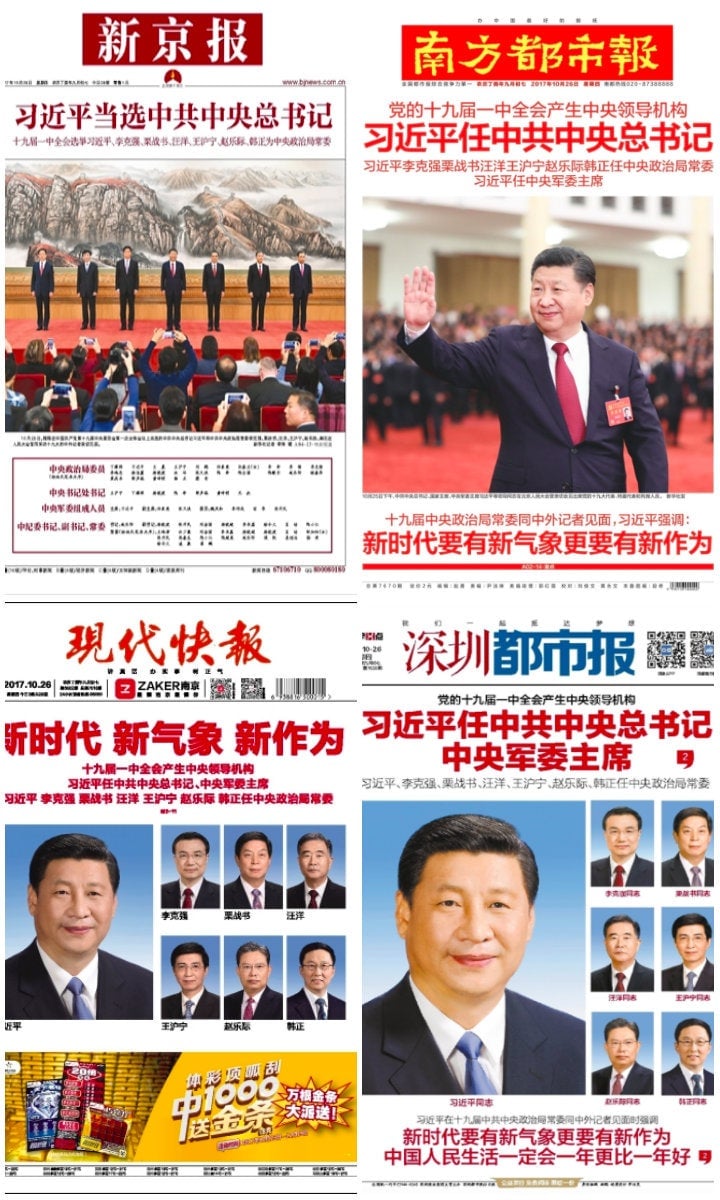Today’s front pages in China are all the same
Your newspaper’s front page typically tells you the biggest news from a day earlier. Today in China, all the front pages have just one story to tell: The all-powerful leader Xi Jinping was again elected general secretary of the Chinese Communist Party.


Your newspaper’s front page typically tells you the biggest news from a day earlier. Today in China, all the front pages have just one story to tell: The all-powerful leader Xi Jinping was again elected general secretary of the Chinese Communist Party.
No surprise there: His re-election, coming at the end of the 19th National Congress, a weeklong leadership-reshuffle event held every five years, was par for course. What’s really news is that none of the five new members of the Politburo Standing Committee, the nations’ top decision-making body, are young enough to serve as China’s next leader.
Xi announced yesterday the seven names of the members, and he’s believed to have had the biggest say over who was chosen. He could have ensured that at least one was below the age of 60—hinting at his possible successor—but, significantly, he decided not to. All the members will be at least 68, the traditional age by which to retire, by 2027, the end of the next five-year term. That fueled more speculation that Xi might break with convention by remaining party chief beyond 2022, when his second term ends. The nation’s constitution bars him from a third term as president, but party chief is the more powerful role.
Of course, China’s state-controlled newspapers won’t flesh out that point to their readers. Indeed no matter which Chinese front page you read, the content is exactly the same. And for the most part, it’s also displayed in the same format:

Among the papers are the People’s Daily (the Communist Party’s top mouthpiece), the People’s Liberation Daily (the official paper of China’s military), and the Beijing Daily (the official paper of the Beijing government). All of their front pages have huge red headlines in the far left column about Xi’s election as party chief, along with a portrait of Xi in the middle, a list of the people in the broader new leadership team in the right column, and a photo of the seven committee members standing side-by-side at the bottom. Most of the papers filled the space next to their mastheads with the news that US president Donald Trump called Xi to congratulate him on his re-election.
All Chinese media are essentially owned by the state under an umbrella structure. The “dailies” are considered top- and second-tier publications as they are run by the state and local governments. The third tier are the less politics-focused papers, often with “Metropolis Daily” in the name, that are spinoffs of local government-controlled media groups. Some of those metro papers opted for different formats and pictures on their front pages, but the main articles about the unveiling of China’s new leadership are still the same, provided by the official state newswire Xinhua.

For longtime China watchers, the more surprising element is the contrast between the front pages today and those in 2007 after the party’s last “midterm” elections (the congress between the first and second terms of the current general secretary). Ten years ago, when then-president Hu Jintao was re-elected party chief, the People’s Daily front page featured headshots, of nearly equal size, of Hu and his eight colleagues, among them Xi, who was then vice president. By contrast, today’s front pages show one headshot only—a big one, of Xi.
At the leadership conclave, Xi also enshrined his name and doctrine into the party’s constitution—an honor only one other Chinese leader, the nation’s founding father Mao Zedong, enjoyed while still in power. His Mao-like status is also reflected by China’s front pages: